Entry Database : PDB / ID : 1wokTitle Crystal structure of catalytic domain of human poly(ADP-ribose) polymerase complexed with a quinoxaline-type inhibitor Poly [ADP-ribose] polymerase-1 Keywords / Function / homology Function Domain/homology Component
/ / / / / / / / / / / / / / / / / / / / / / / / / / / / / / / / / / / / / / / / / / / / / / / / / / / / / / / / / / / / / / / / / / / / / / / / / / / / / / / / / / / / / / / / / / / / / / / / / / / / / / / / / / / / / / / / / / / / / / / / / / / / / / / / / / / / / / / / / / / / / / / / / / / / / / / / / / / / Biological species Homo sapiens (human)Method / / / Resolution : 3 Å Authors Iwashita, A. / Hattori, K. / Yamamoto, H. / Ishida, J. / Kido, Y. / Kamijo, K. / Murano, K. / Miyake, H. / Kinoshita, T. / Warizaya, M. ...Iwashita, A. / Hattori, K. / Yamamoto, H. / Ishida, J. / Kido, Y. / Kamijo, K. / Murano, K. / Miyake, H. / Kinoshita, T. / Warizaya, M. / Ohkubo, M. / Matsuoka, N. / Mutoh, S. Journal : Febs Lett. / Year : 2005Title : Discovery of quinazolinone and quinoxaline derivatives as potent and selective poly(ADP-ribose) polymerase-1/2 inhibitors.Authors : Iwashita, A. / Hattori, K. / Yamamoto, H. / Ishida, J. / Kido, Y. / Kamijo, K. / Murano, K. / Miyake, H. / Kinoshita, T. / Warizaya, M. / Ohkubo, M. / Matsuoka, N. / Mutoh, S. History Deposition Aug 20, 2004 Deposition site / Processing site Revision 1.0 Mar 15, 2005 Provider / Type Revision 1.1 Apr 30, 2008 Group Revision 1.2 Jul 13, 2011 Group Revision 1.3 Oct 11, 2017 Group / Category Revision 1.4 Oct 25, 2023 Group Data collection / Database references ... Data collection / Database references / Derived calculations / Refinement description Category chem_comp_atom / chem_comp_bond ... chem_comp_atom / chem_comp_bond / database_2 / pdbx_initial_refinement_model / struct_site Item _database_2.pdbx_DOI / _database_2.pdbx_database_accession ... _database_2.pdbx_DOI / _database_2.pdbx_database_accession / _struct_site.pdbx_auth_asym_id / _struct_site.pdbx_auth_comp_id / _struct_site.pdbx_auth_seq_id
Show all Show less
 Yorodumi
Yorodumi Open data
Open data Basic information
Basic information Components
Components Keywords
Keywords Function and homology information
Function and homology information Homo sapiens (human)
Homo sapiens (human) X-RAY DIFFRACTION /
X-RAY DIFFRACTION /  SYNCHROTRON /
SYNCHROTRON /  MOLECULAR REPLACEMENT / Resolution: 3 Å
MOLECULAR REPLACEMENT / Resolution: 3 Å  Authors
Authors Citation
Citation Journal: Febs Lett. / Year: 2005
Journal: Febs Lett. / Year: 2005 Structure visualization
Structure visualization Molmil
Molmil Jmol/JSmol
Jmol/JSmol Downloads & links
Downloads & links Download
Download 1wok.cif.gz
1wok.cif.gz PDBx/mmCIF format
PDBx/mmCIF format pdb1wok.ent.gz
pdb1wok.ent.gz PDB format
PDB format 1wok.json.gz
1wok.json.gz PDBx/mmJSON format
PDBx/mmJSON format Other downloads
Other downloads 1wok_validation.pdf.gz
1wok_validation.pdf.gz wwPDB validaton report
wwPDB validaton report 1wok_full_validation.pdf.gz
1wok_full_validation.pdf.gz 1wok_validation.xml.gz
1wok_validation.xml.gz 1wok_validation.cif.gz
1wok_validation.cif.gz https://data.pdbj.org/pub/pdb/validation_reports/wo/1wok
https://data.pdbj.org/pub/pdb/validation_reports/wo/1wok ftp://data.pdbj.org/pub/pdb/validation_reports/wo/1wok
ftp://data.pdbj.org/pub/pdb/validation_reports/wo/1wok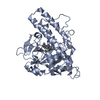
 Links
Links Assembly
Assembly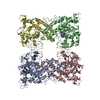
 Components
Components Homo sapiens (human) / Gene: PPOL / Plasmid: PGEX4T-2 / Production host:
Homo sapiens (human) / Gene: PPOL / Plasmid: PGEX4T-2 / Production host: 
 X-RAY DIFFRACTION / Number of used crystals: 1
X-RAY DIFFRACTION / Number of used crystals: 1  Sample preparation
Sample preparation SYNCHROTRON / Site:
SYNCHROTRON / Site:  SPring-8
SPring-8  / Beamline: BL26B2 / Wavelength: 1 Å
/ Beamline: BL26B2 / Wavelength: 1 Å Processing
Processing MOLECULAR REPLACEMENT
MOLECULAR REPLACEMENT Movie
Movie Controller
Controller


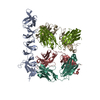
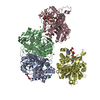

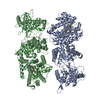




 PDBj
PDBj







